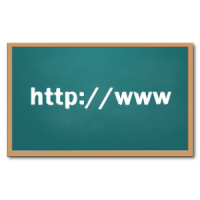The purpose of Web 2.0 design is to focus on the user, and to step up the level of interactivity. Instead of limiting the user to simply viewing the content you have put on your page, a Web 2.0 design will facilitate dialog & user created content. Some examples of Web 2.0 are blogs, mashups, social networking sites and video sharing sites. In this article we will discuss the different characteristics of a Web 2.0 design.
The first thing to keep in mind when designing, is less is more. Removing unnecessary components will not only make your website load faster, it will direct your users attention to the important parts. It is said that you only have 3.5 seconds to capture and retain the viewers attention, and with Web 2.0, it won’t be hard to do.

The structure of the layout itself should feature distinct top section featuring a clean, bold and obvious navigation area. Using less columns will declutter your space, and will be easy on the viewers eye. Doing this will ensure that your visitors will be focusing on the important stuff.
Strong colors, a bold logo, shiny and glassy buttons, icons and bigger text are classic characteristics of this design. Using strong and vibrant colors gives a crisp feel, and draws the eye to more important elements. A bold logo can convey the attitude of your website, while shiny and glassy buttons give a polished look. Those cute icons you see on Web 2.0 pages are ever popular and add a high quality feel to your design, but be careful, if they are used too much, it can do the opposite and your website can look cluttered.
One of the most popular trends with Web 2.0 designs are badges. These are used in banner or graphic work, are considered eye candy and they use square or round corners, a glossy finish and feature eye catching colors.
Bigger text is more noticeable and aesthetically pleasing. You can fill the same amount of space with less information, keeping your user engaged. It also adds another level of accessibility, not only for those with bad eyesight, but for users who tend to skim pages instead of reading every word.
Instead of presenting a flat medium, you can use 3D effects like reflections, drop shadows, transparencies and fades give an element of depth to your design.
Another characteristic of Web 2.0 designs is interactivity. Instead of just giving the user a limited amount of content to read, risking them becoming board, adding features like audio, video and the ability to share content with various social networks is key.
The key advantage to Web 2.0 is communication, and if the design is done correctly, you stand a better chance of capturing and retaining the attention of prospective viewers, having them come back again and again.
